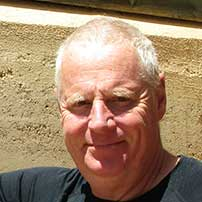Conflict Heritage of the Recent Past: A Global Perspective
A special issue of Heritage (ISSN 2571-9408).
Deadline for manuscript submissions: closed (30 November 2021) | Viewed by 4605
Special Issue Editor
Interests: conservation management; urban ecosystems; Pacific history; novel ecosystems; Indian diaspora; heritage and disasters; COVID-19; historic ecology; environmental history; intangible heritage; cultural heritage planning; heritage policy; adaptive reuse
Special Issues, Collections and Topics in MDPI journals
Special Issue Information
Dear Colleagues,
The in the past few years the heritage and archaeology of World War I and World War II has received a great deal of attention with the documentation and investigation of battle fields, military installations, ship- and aircraft wrecks. The global nature of both wars, as well as the ubiquity of sites and objects associated with these events had lend itself to a plethora of investigations carried out by researchers from many countries. But conflict heritage, of course, is not limited to these periods. It ranges from antiquity throughout history to the present.
While World War I had been touted as ‘the war that ends all wars,’ the conclusion of World War II made no such claims. Indeed, armed conflict continued on almost all continents: Cuba, Angola, the Falklands, Korea, Vietnam, India-Pakistan, Palestine, Iraq. The list continues. Aside from ‘hot wars’, there was the Cold War, with all its manifestations from the Berlin Wall to the delivery mechanisms of mutually assured annihilation. And while armed conflict was initially the prerogative of nation states, the second part of the twentieth century has seen extensive evidence for guerrilla warfare, insurgencies and terrorism. Beyond this, there were instances of civil unrest, such as the urban riots following the deaths of Rodney King and most recently George Floyd. On a local level, warring factions were separated by walls, be it Belfast or Gaza.
The heritage of late twentieth century conflict extends well beyond the sites and objects associated with the pursuits of military and military-style operations. Cultural heritage sites themselves came under attack due to ideological differences between the originators of that heritage and the perpetrators of destruction.
The aim of this special issue to provide a truly global perspective on the conflict heritage of the recent past. This issue particularly would like to see papers that consider one or more of the following aspects:
- Documenting and managing sites / battlefields /landscapes with post World War II military campaigns
- Documenting and managing sites and landscapes associated with the Cold War
- Managing and interpreting the heritage of Guerrila warfare
- Examples of ideologically-motivated destruction of cultural heritage
- Managing and interpreting the heritage of Domestic and International terrorism
- Managing and interpreting the heritage of urban unrest
- Managing and interpreting ethnic cleansing
- Managing and interpreting mass graves
Prof. Dr. Dirk H.R. Spennemann
Guest Editor
Manuscript Submission Information
Manuscripts should be submitted online at www.mdpi.com by registering and logging in to this website. Once you are registered, click here to go to the submission form. Manuscripts can be submitted until the deadline. All submissions that pass pre-check are peer-reviewed. Accepted papers will be published continuously in the journal (as soon as accepted) and will be listed together on the special issue website. Research articles, review articles as well as short communications are invited. For planned papers, a title and short abstract (about 100 words) can be sent to the Editorial Office for announcement on this website.
Submitted manuscripts should not have been published previously, nor be under consideration for publication elsewhere (except conference proceedings papers). All manuscripts are thoroughly refereed through a single-blind peer-review process. A guide for authors and other relevant information for submission of manuscripts is available on the Instructions for Authors page. Heritage is an international peer-reviewed open access monthly journal published by MDPI.
Please visit the Instructions for Authors page before submitting a manuscript. The Article Processing Charge (APC) for publication in this open access journal is 1600 CHF (Swiss Francs). Submitted papers should be well formatted and use good English. Authors may use MDPI's English editing service prior to publication or during author revisions.





